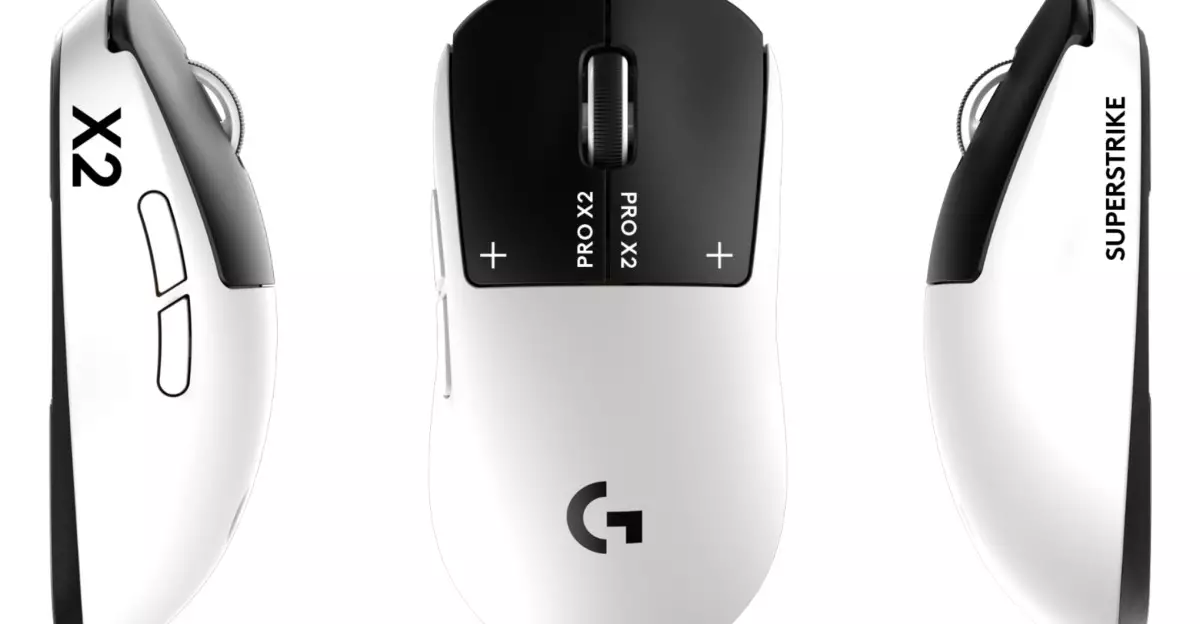Logitech’s latest innovation, the Pro X2 Superstrike, marks a transformative shift in gaming hardware, boldly challenging long-standing conventions. Unlike traditional gaming mice that depend on mechanical switches for tactile feedback, the Superstrike introduces an unprecedented hybrid approach. By leveraging analog sensors paired with cutting-edge haptic technology, Logitech seeks to redefine what gamers can expect from precision devices. This leap forward embodies a daring vision—one that combines responsiveness, customization, and technological sophistication into a compact, lightweight form factor.
The core premise revolves around replacing physical clicks with simulated feedback through haptic actuators. This system, dubbed the Haptic Inductive Trigger System (HITS), employs inductive sensors capable of minimal travel—just 0.6 millimeters—delivering rapid, low-latency commands. What makes this particularly compelling is Logitech’s goal of surmounting latency limitations, promising up to 30 milliseconds of reduced input delay. This innovation seems aimed less at casual gamers and more at professional eSports athletes who continuously push the boundaries of reflexes and reaction times. The Superstrike’s design seems to prioritize speed and responsiveness, yet the real question remains: Can hardware that eschews traditional switches truly replicate the tactile nuance that gamers rely upon?
Redefining Click Feel and Responsiveness
A fundamental strength of the Superstrike lies in its customizable rapid trigger system. Unlike conventional mice, where a click is either registered or not, this device supports five adjustable reset points, configurable through Logitech’s G Hub software. This granular control allows gamers to tailor the click’s feel and timing according to their preferences or specific gaming scenarios. For example, in FPS titles, rapid firing or quick reactions are crucial; the ability to set the trigger to reset swiftly—almost instantly—can provide a tangible competitive advantage. It’s akin to having a mechanical switch with a hyper-sensitive, adjustable actuation point, but one that avoids wear and tear over time.
Furthermore, the device’s weight—just 65 grams—embodies the current trend toward ultra-light mice designed for swift, precise maneuvers. The inclusion of Logitech’s Hero 2 sensor sustains the impressive tracking accuracy users expect. Interestingly, the Superstrike boasts wireless performance with an 8,000Hz polling rate via Lightspeed, although skepticism about the practicality of such high rates persists. Still, combined with the rapid trigger functionality, this mouse hints at a future where latency might become largely negligible, providing an almost instantaneous input experience that could fundamentally alter competitive gameplay.
The Future of Gaming Mice and the Skeptic’s Perspective
Despite its visionary features, the Superstrike does raise critical questions. The elimination of mechanical switches—replaced by haptic feedback—may be viewed with suspicion by purists who value the tangible, “clicky” sensation that mechanical parts provide. The difference between simulated and real tactile feedback is subtle and, for some, might detract from the immersion or confidence earned through traditional switches. The reliability and durability of haptic actuators over prolonged use are yet untested in real-world scenarios, creating potential concerns about longevity.
Another point of contention is the high polling rate of 8,000Hz. In theory, such a rate offers minimal input lag; in practice, human reaction times and display refresh rates may not realize these benefits fully. While tech enthusiasts and professional gamers might appreciate the technical prowess, the average user might not perceive any meaningful difference, rendering this feature more of a marketing triumph than a necessity.
Ultimately, Logitech’s Superstrike embodies a daring venture into the future of gaming peripherals—merging hardware innovation with software customization. It signifies a willingness to challenge established norms and to explore the boundaries of responsiveness, ergonomics, and user experience. Whether it becomes a game-changer or a niche curiosity will depend heavily on how well the haptic technology performs under long-term use and how receptive the competitive community is to this new paradigm.

